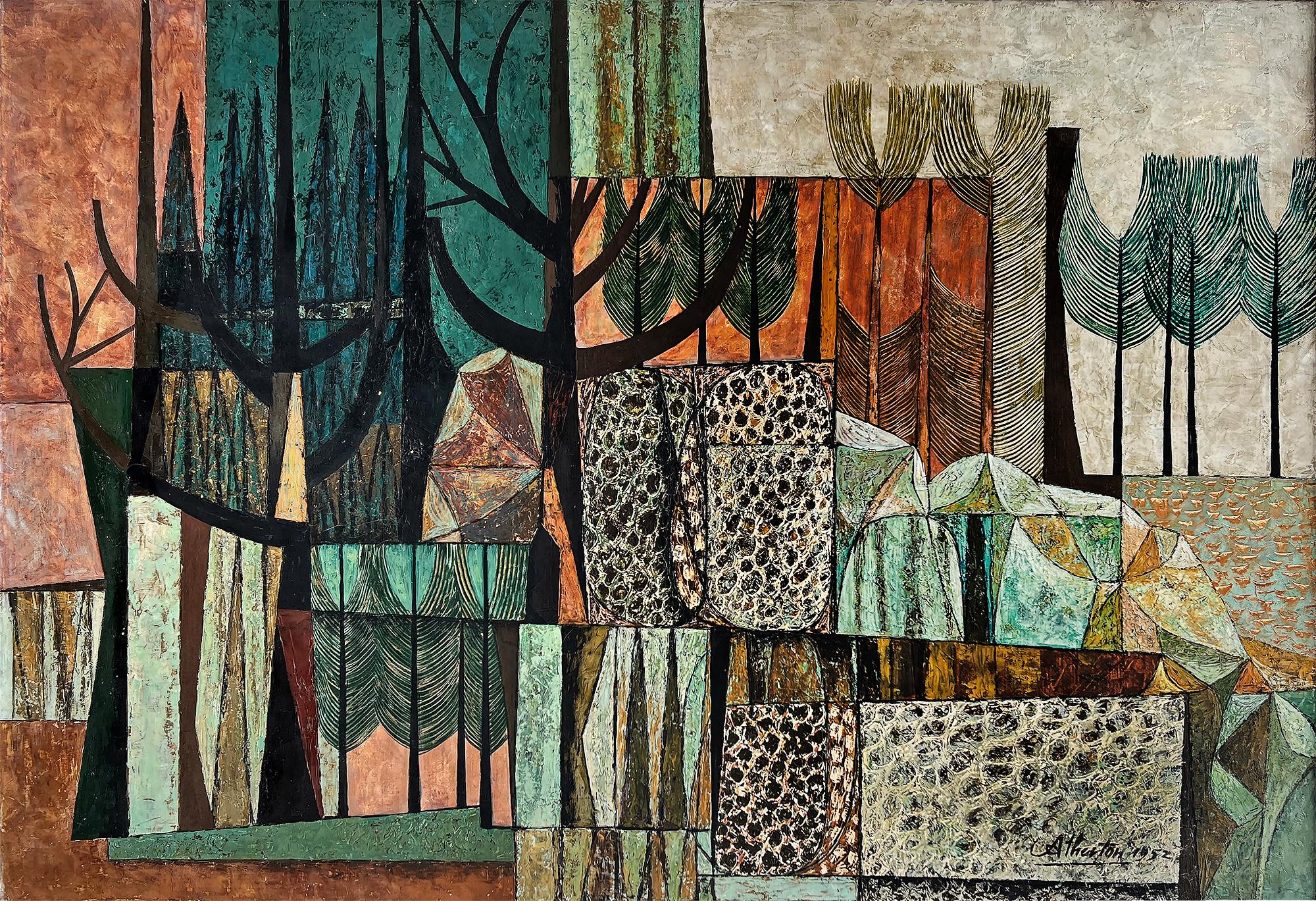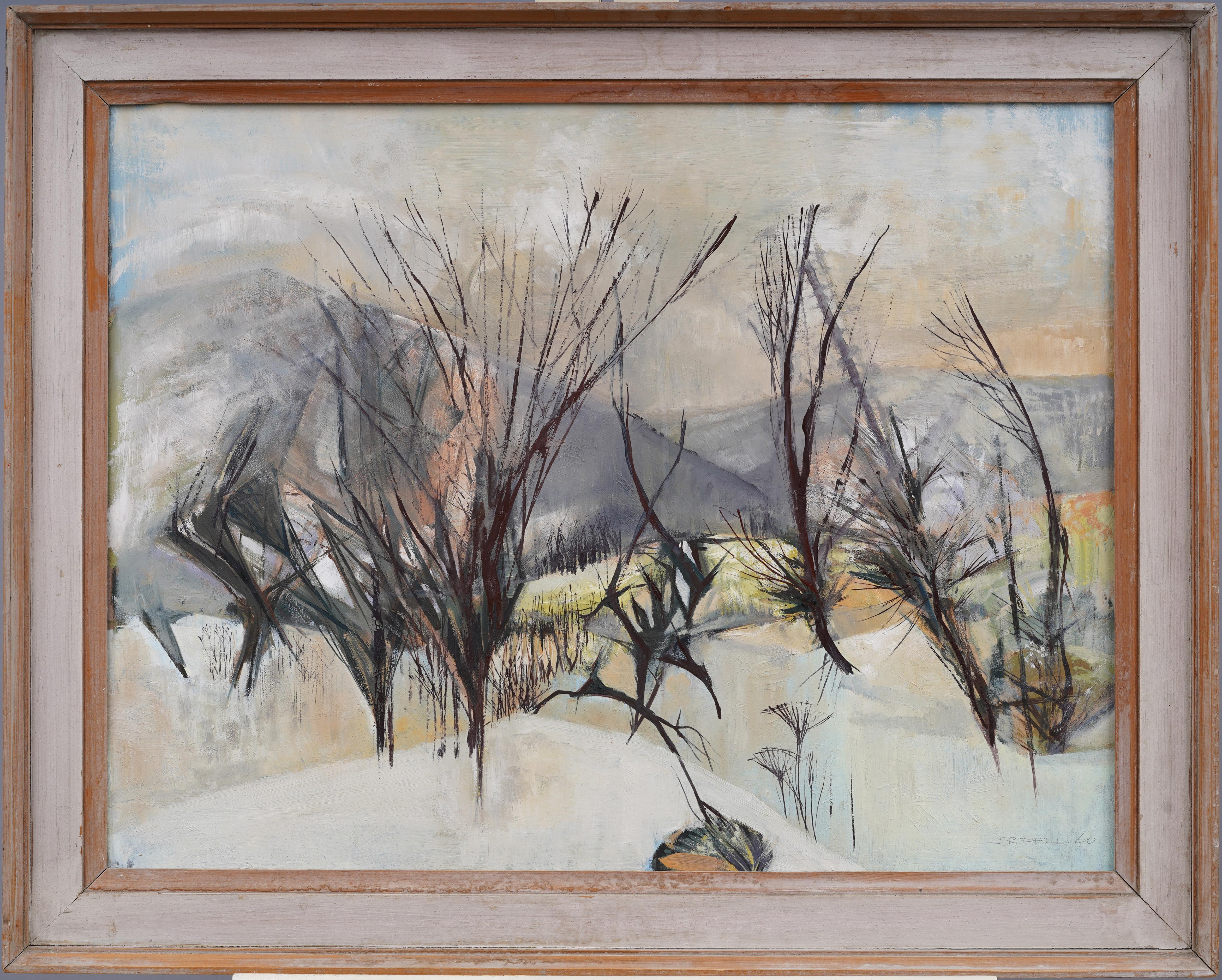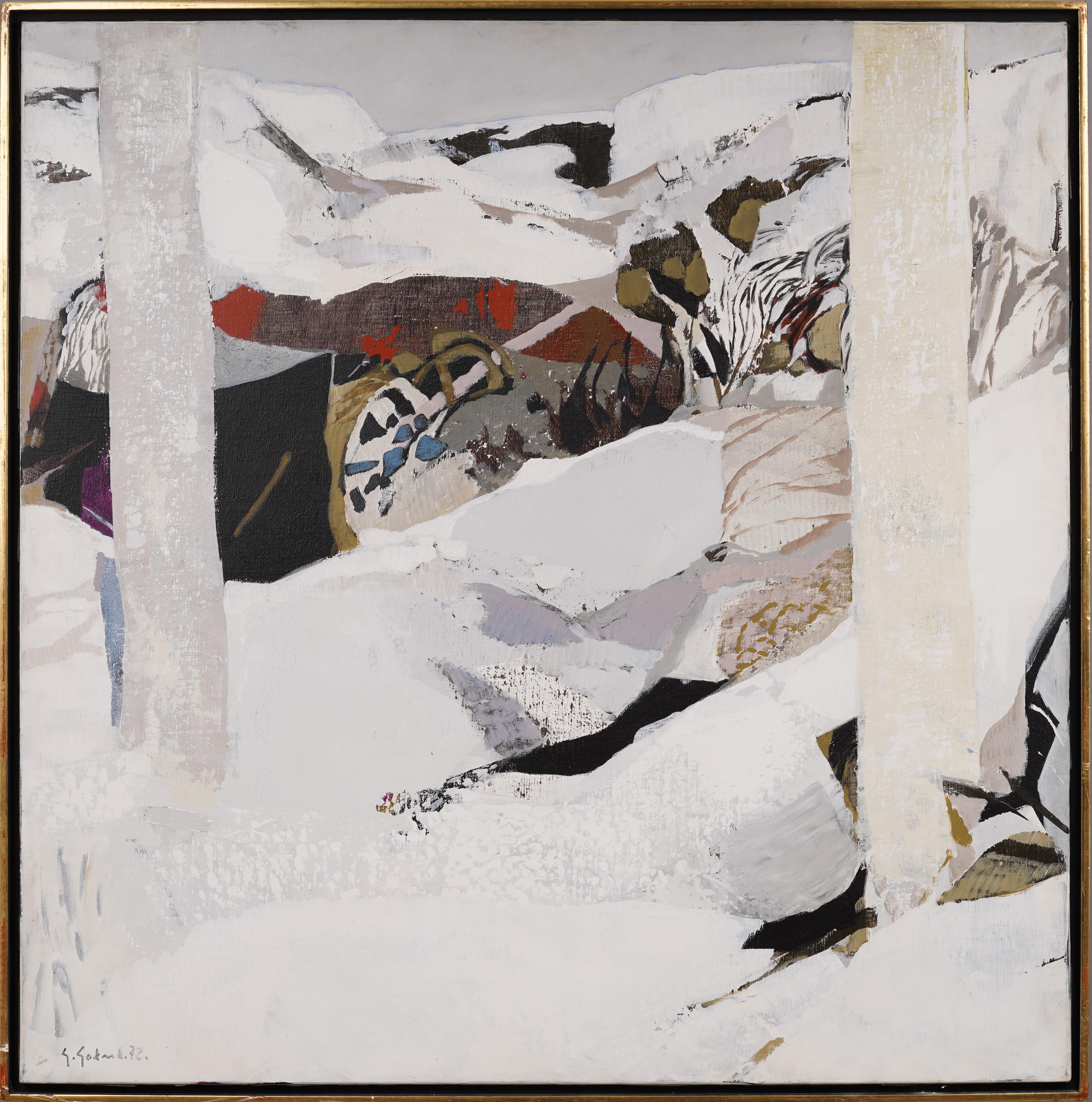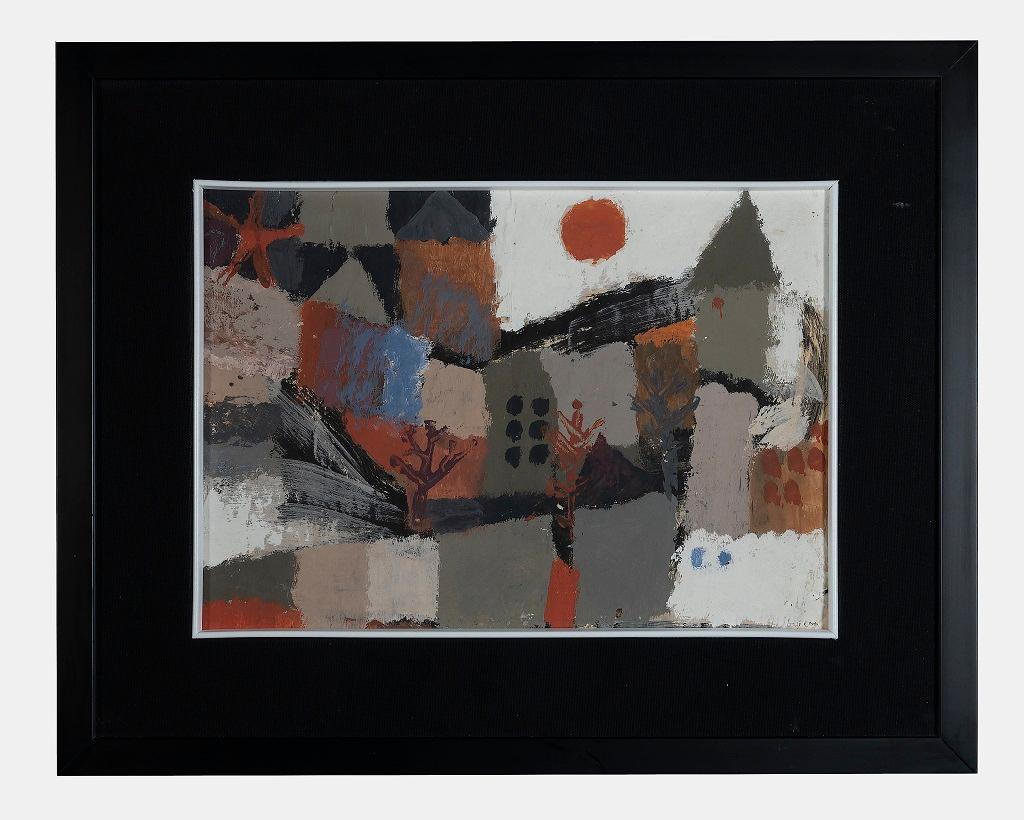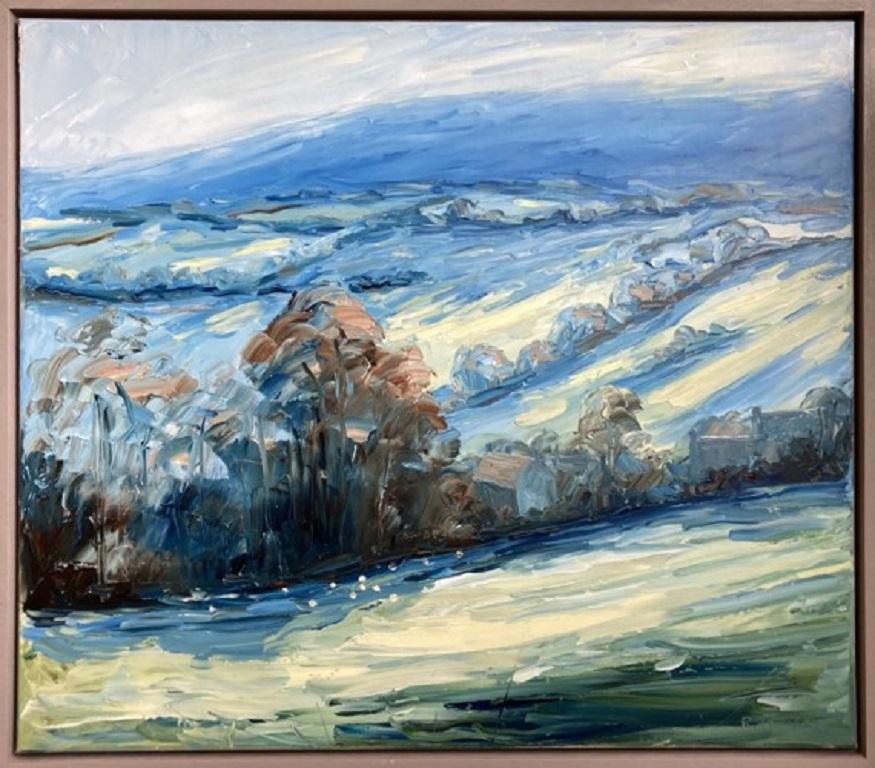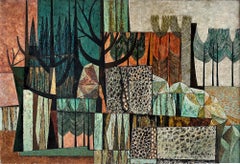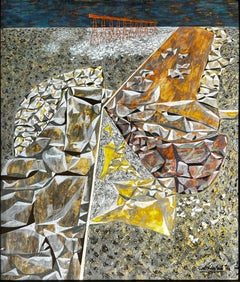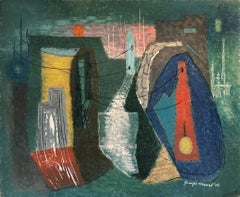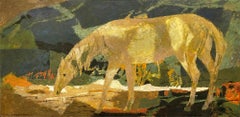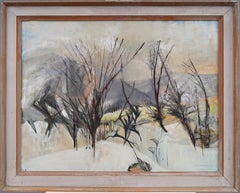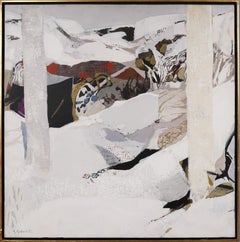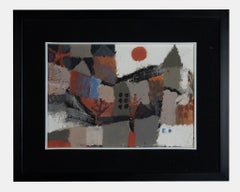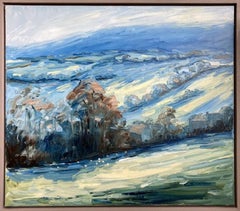Items Similar to Landscape in Winter
Want more images or videos?
Request additional images or videos from the seller
1 of 12
John AthertonLandscape in Winter1950
1950
$35,000
£26,428.78
€30,456.28
CA$49,399.88
A$54,462.24
CHF 28,492.88
MX$668,150.49
NOK 358,668.98
SEK 335,412.21
DKK 227,448.27
About the Item
At a time when Abstract Expressionism was raging, realist painterJohn Atherton nods his head to the movement with a semi-abstract work. Meticulously rendered and carefully thought out, this work charms the eye and engages the mind. Signed lower
- Creator:John Atherton (1899 - 1972, American)
- Creation Year:1950
- Dimensions:Height: 20 in (50.8 cm)Width: 24 in (60.96 cm)
- Medium:
- Movement & Style:
- Period:
- Condition:very good condition.
- Gallery Location:Miami, FL
- Reference Number:1stDibs: LU38538766952
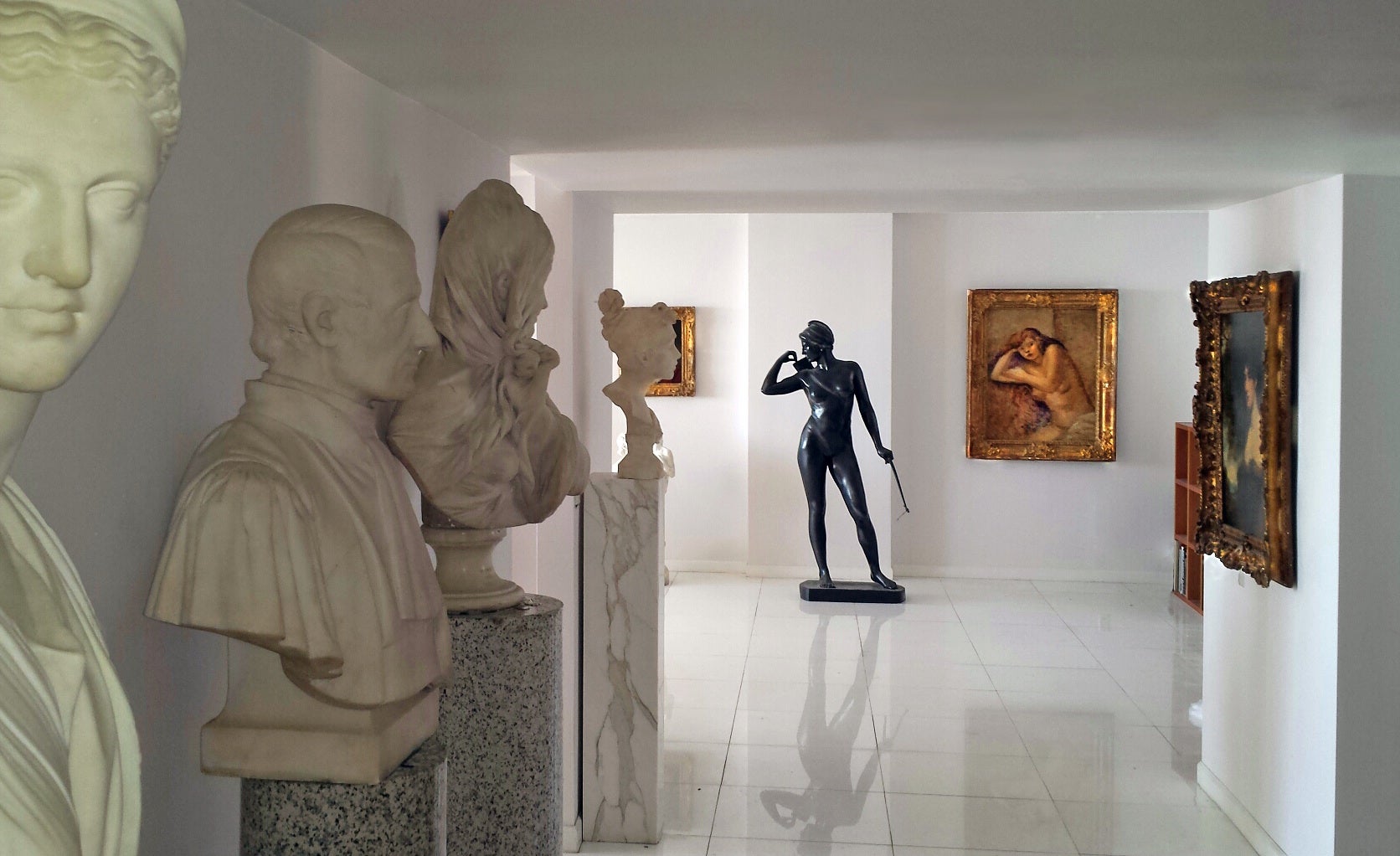
About the Seller
5.0
Gold Seller
Premium sellers maintaining a 4.3+ rating and 24-hour response times
Established in 2005
1stDibs seller since 2016
117 sales on 1stDibs
Typical response time: 1 hour
- ShippingRetrieving quote...Shipping from: Miami, FL
- Return Policy
Authenticity Guarantee
In the unlikely event there’s an issue with an item’s authenticity, contact us within 1 year for a full refund. DetailsMoney-Back Guarantee
If your item is not as described, is damaged in transit, or does not arrive, contact us within 7 days for a full refund. Details24-Hour Cancellation
You have a 24-hour grace period in which to reconsider your purchase, with no questions asked.Vetted Professional Sellers
Our world-class sellers must adhere to strict standards for service and quality, maintaining the integrity of our listings.Price-Match Guarantee
If you find that a seller listed the same item for a lower price elsewhere, we’ll match it.Trusted Global Delivery
Our best-in-class carrier network provides specialized shipping options worldwide, including custom delivery.More From This Seller
View AllLandscape Abstraction - Mid-Century - Twenty Paintings in One
Located in Miami, FL
When it comes to abstract painting, the creation date is important. At the height of Abstraction Expressionism, overlooked Academic Artist John Atherton created a wonderfully complex painting that embodies many of the characteristics of what was going on in Mid-Century American Art. The work is simultaneously abstract as it is representational. Like a Bento Box, it's divided into sections by dividers. On close inspection, each section stands on it's own as a beautiful mini-painting yet coalesces as part of the whole. From a distance, it is eye-pleasing, but as the view gets closer and closer, new structures and details gloriously reveal themselves. This is an important painting and not unlike the work of Joaquín Torres-García. It was done in the last year of the artist's life. Signed lower right. Canvas is relined. Framed size: 30 x 41.25. The work is best viewed with top gallery lights to bring out color.
Color will look different under different lighting conditions. Atherton exhibited at the famous Julien Levy Gallery in New York and his fine art is mainly associated with Magic Realism. He participated in the seminal 1943 Museum of Modern Art exhibition, American Realists and Magic Realists. The Museum of Modern Art has 4 Atherton paintings in its collection. As an Illustrator, Atherton did covers for the Saturday Evening Post, Fortune and Holiday Magazine...
Category
1950s Abstract Expressionist Abstract Paintings
Materials
Canvas, Oil
Thought Provoking Rock Quarry - Mid Century Abstract
Located in Miami, FL
This meticulously planned, designed, and executed work depicts an ultra-wide angle view of a rock quarry/mine. The viewer looks down at close-up-stylized rock formations and then out at a horizon line with rust-colored mine trestles. Atherton hints at perspective with a broken white line that is wider in the foreground and tapers to a hairline as it recedes to the background. The work was done in 1951 at the height of America's most important art movement: Abstract Expressionism. John Atherton absorbs its influences but retains elements of representation. Atherton was an in-demand commercial artist who worked for most blue-chip clients. It is possible that this was an editorial assignment for Fortune Magazine. At the same time, Atherton was also a fine artist and the work could be an expression of pure creative pursuits. The work looks better in person and one can look at it for hours and not get bored. Look carefully and you may discover a deeper meaning in this painting of precisely arranged rocks. Signed lower right.
Brooklyn Museum of Art, New York, sold to benefit the acquisitions program
____________________
From Wikipedia, the free encyclopedia
John Carlton Atherton (January 7, 1900 - September 16, 1952) was an American painter and magazine illustrator, writer and designer. His works form part of numerous collections, including the Museum of Modern Art,[1] Whitney Museum of American Art and the Smithsonian American Art Museum.[2][3][4]
Early Years
He was the son of James Chester Atherton (1868-1928) and Carrie B. Martin (1871-1909). He was born in Brainerd, Minnesota.[5] His father was Canadian born. His parents relocated from Minnesota to Washington State, with his maternal grandparents whilst he was still an infant. He attended high school in Spokane, Washington.
Career
During his early years he never displayed an aptitude for art; rather, his first love being nature and the activities he relished there, mainly fishing and hunting. He enlisted in 1917, serving briefly in the U.S. Navy for a year during World War I. At the end of the war, determined to get an education he worked various part-time jobs, as a sign painter and playing a banjo in a dance band to pay his enrolment fee at the College of the Pacific and The California School of Fine Arts (now the San Francisco Art Institute). Once there, he also worked in the surrounding studios developing his oil painting techniques.
A first prize award of $500 at the annual exhibition of the Bohemian Club in 1929, financed his one way trip to New York City, which helped to launch his career as an artist.[6]
Atherton had aspired to be a fine artist, however his first paid jobs were for commercial art firms designing advertisements for corporations such as General Motors, Shell Oil, Container Corporation of America, and Dole. However, by 1936, encouraged primarily by friends, such as Alexander Brook, an acclaimed New York realist painter, he returned to the fine arts.
Atherton continued to accept numerous commissions for magazine illustrations; such as Fortune magazine, and over the years he would paint more than forty covers for The Saturday Evening Post starting with his December 1942 design, “Patient Dog.” This picture is reminiscent of his friend Norman Rockwell ‘Americana style’ and captures a poignant moment of nostalgia, where a loyal dog looks toward a wall of hunting equipment and a framed picture of his owner in military uniform.
Selected One person Exhibitions
Atherton accomplished his first one-man show in Manhattan in 1936. His Painting, “The Black Horse” won the $3000 fourth prize from among a pool of 14,000 entries. This painting forms part of the Metropolitan Museum of Art collection in New York.[7]
Atherton achieved recognition in New York City and elsewhere during the 1930s. Having exhibited at the Julien Levy Gallery in New York,[8] his paintings began to be collected by museums; including the Museum of Modern Art[9] and the Metropolitan Museum of Art.
His reputation increased with his art deco stone lithograph poster for the 1939 New York World's Fair. In 1941, his design won first place in the Museum of Modern Arts “National Defense Poster Competition”.
Selected Public Collections
Fleming Museum of Art, Burlington, Vermont
Albright-Knox Art Gallery,[10] Buffalo, NY
Art Institute of Chicago,[11] Chicago
Wadsworth Atheneum,[12] Hartford, CT
Brooklyn Museum of Art, New York
Metropolitan Museum of Art, New York
The Museum of Modern Art,[13] New York
Whitney Museum of American Art,[14] New York
Pennsylvania Academy of the Fine Arts,[15] Philadelphia
De Young Museum,[16] San Francisco
Smithsonian American Art Museum,[17] Washington DC
Butler Institute of American Art[18] Youngstown, OH
The Famous Artists School
Founded in 1948 in Westport, Connecticut, U.S.A. The idea was conceived by members of the New York Society of Illustrators (SOI), but due to the Society's legal status, could not be operated by it. SOI member Albert Dorne led the initiative to set up a separate entity, and recruited the support of Norman Rockwell, who was also an SOI member. For the founding faculty, Dorne recruited Atherton, as well as accomplished artists such as Austin Briggs, Stevan Dohanos, Robert Fawcett, Peter Helck, Fred Ludekens, Al Parker, Norman Rockwell, Ben Stahl, Harold von Schmidt and Jon Whitcomb.[19]
He collaborated with Jon Whitcomb with the book “How I Make a Picture: Lesson 1-9, Parts 1”.[20][21]
Society of Illustrators
Atherton as an active member from his arrival in New York. The society have owned many of his works. Ex-collection includes:
Rocking Horse (ca. 1949) [22]
Atherton, as his peers had many of his works framed by Henry Heydenryk Jr.[23]
Personal
On November 2, 1926, he married Polly “Maxine” Breese (1903-1997).[24][25] They had one daughter, Mary Atherton, born in 1932.
Atherton's often chose industrial landscapes, however found himself spending considerable time in Westport, Connecticut, with an active artistic community, and it became home for him, and his family. He then moved to Arlington, Vermont.[26]
Norman Rockwell enlisted Atherton in what was to be the only collaborative painting in his career.[27]
He was part of a group of artists including a Norman Rockwell, Mead Schaeffer and George Hughes who established residences in Arlington.[28] Atherton and Mead Schaeffer were avid fly fishermen and they carefully chose the location for the group,[29] conveniently located near the legendary Battenkill River.
In his free time, Atherton continued to enjoy fly-fishing.[30] He brought his artistic talent into the field of fishing,[31] when he wrote and illustrated the fishing classic, “The Fly and The Fish”.[32]
He died in New Brunswick, Canada in 1952,[33] at the age of 52 in a drowning accident while fly-fishing.[34]
Legacy
The Western Connecticut State University holds an extensive archive on this artist.[35]
His wife, Maxine also published a memoir “The Fly Fisher and the River” [36] She married Watson Wyckoff in 1960.
Ancestry
He is a direct descendant of James Atherton,[37][38] one of the First Settlers of New England; who arrived in Dorchester, Massachusetts in the 1630s.
His direct ancestor, Benjamin Atherton was from Colonial Massachusetts...
Category
1950s Abstract Expressionist Abstract Paintings
Materials
Mixed Media, Gouache, Board
City Scape Abstract Expressionist Composition -Jackson Pollack Friend
By Joseph Meert
Located in Miami, FL
The fame, notoriety, and monetary value of an artist's work in today's market are not based on one's talent and vision. Factors such as marketing and media momentum play a defining r...
Category
1940s Abstract Expressionist Abstract Paintings
Materials
Gouache, Board
Lone Horse in Abstract Landscape
By Ethel Magafan
Located in Miami, FL
A stylized horse is depicted grazing in an abstract landscape. Most likely, the location is Woodstock, New York, where the artist lived.
Signed Lower Right; Framed; Note: titled and signed on verso.
Ethel Magafan (August 10, 1916 – April 24, 1993) was an American painter and muralist.
Magafan was born in Chicago to Greek parents who had recently immigrated to the U.S. The family soon relocated to Colorado Springs, Colorado, and Magafan's artistic training occurred at the Colorado Springs Fine Arts Center under the tutelage of Peppino Mangravite, Boardman Robinson and Frank Mechau, who hired Magafan and her twin sister, Jenne, to assist on mural projects. In 1937, aEthel won the commission to paint a mural in the U.S. post office in Auburn, Nebraska, making her the youngest recipient of such a commission. It would be the first of seven government-sponsored commissions for the artist.
Murals
"Andrew Jackson at the Battle of New Orleans, January 8, 1814" E. Magafan, 1943
Under President Franklin Roosevelt's New Deal, several programs were created to employ Americans during the Great Depression. The Magafan twins worked under the New Deal's Section of Painting and Sculpture, a program that hired thousands of artists to paint murals in public spaces, particularly post offices. Ethel and her twin sister, Jenne Magafan, became widely known for their murals painted during the Great Depression. Ethel received her first of seven Government commissions when she was commissioned to produce a painting for the United States post office in Auburn, Nebraska, titled Threshing.Other murals commissioned by the US Government hang in the United States Senate Chamber, the Social Security Building and the Recorder Deeds Building in Washington, D.C., and in post offices in Wynne, Arkansas, titled Cotton Pickers in 1940; in Madill, Oklahoma, titled Prairie Fire in 1941; and Englewood, Colorado, titled The Horse Corral in 1942.Her final mural, entitled Grant in the Wilderness, was installed in 1979 in the Chancellorsville Visitor Center at the Fredericksburg National Memorial Military Park in Virginia,
She was a member of the National Academy of Design.
Magafan died April 24, 1993, in Woodstock, New York, at the age of 76.
References
"Collections National Academy Museum". Retrieved 2017-03-08.
"Jenne Magafan". Retrieved 2017-03-08.
Marlene Park and Gerald E. Markowitz, Democratic Vistas: Post Offices and Public Art in the New Deal. Philadelphia: Temple University Press, 1984.
"Browse New Deal projects by State and City". Living New Deal. Retrieved 9 January 2015.
"Ethel Magafan Passes Away". New York Times. No. Obituary. April 29, 1993.
Opitz, Glenn B, Editor, Mantle Fielding's Dictionary of American Painters, Sculptors & Engravers, Apollo Book...
Category
1960s Contemporary Animal Paintings
Materials
Masonite, Tempera
Storm Composition #3
By Abraham Rattner
Located in Miami, FL
An early example of Abstract Expressionism executed in 1955 during the movement's heyday and it's period of peak inventiveness. However, this work is still rooted in representation. The dark area the runs along the base of the picture is the ground and to the left, right and center there are black structures that represent trees. The work is very tactile and is composed of globs of paint that grow out from the surface and form a thick impasto. Rich vibrant saturated blues, reds and oranges create optical drama. The work look better in person. frame: 29 x 39 1/2 inches , Provenance: Kennedy Galleries
The Currier Gallery of Art...
Category
1950s Abstract Expressionist Abstract Paintings
Materials
Oil
Shotgun Hunting Abstract with Shooting Bullseye
Located in Miami, FL
Complex and masterfully thought out the composition of rifle, gun shells, target shapes, and buck shots. Most likely done for a ad or men's magazine.
Signed lower right Atherton. Housed in a rustic House of Heydenryk frame...
Category
1940s Post-Modern Abstract Paintings
Materials
Gouache, Board
You May Also Like
Signed Vintage American School Modernist Winter Cubist Framed Landscape Painting
Located in Buffalo, NY
Finely painted bright and brilliant cubist winter landscape. Framed nicely and signed lower right. Excellent mid century example.
Category
1960s Cubist Abstract Paintings
Materials
Canvas, Oil
$1,020 Sale Price
20% Off
Antique French Modernist Winter Abstract Landscape Exhibited Signed Oil Painting
Located in Buffalo, NY
Vintage signed abstract landscape painting by Gabriel Godard (Born 1933).
Oil on canvas. Framed. Exhibited.
Category
1960s Abstract Expressionist Abstract Paintings
Materials
Canvas, Oil
Winter Landscape - Tempera and Watercolor by Sergio Barletta - 1970s
By Sergio Barletta
Located in Roma, IT
Winter landscape is an original artwork, realized by Sergio Barletta in the 1970s.
Watercolor and tempera.
Includes frame: 38 x 3.5 x 48 cm
Hand-signed on the lower margin
Sergio Barletta (1934) is an Italian cartoonist and illustrator, who has also published some humorous and political satire books.
From the age of 22 is active in Rome, where he worked as an illustrator and art director in some monthly magazines like “Costume”, Diners Club house organ, BP Review, IBM, and others.
In 1965 started the joint-working with Marino Gallery in Rome, and in 1966 in Milan with Humour Graphic’s group, at Levi Gallery and others in the following years.
In these years graphic work and illustration are mixed with painting and photography, also with satirical drawings...
Category
1970s Abstract Abstract Paintings
Materials
Tempera
Rupert Aker, Sheepscombe, Winter, Original landscape painting
By Rupert Aker
Located in Deddington, GB
Sheepscombe, winter By Rupert Aker [2021]
original
Oil paint on canvas
Image size: H:70 cm x W:80 cm
Complete Size of Unframed Work: H:70 cm x W:80 cm x D:2cm
Frame Size: H:73 cm...
Category
21st Century and Contemporary Abstract Landscape Paintings
Materials
Canvas, Oil
Landscape Geometry - intimate, abstract, cubist, landscape, acrylic on canvas
By Otto Rogers
Located in Bloomfield, ON
Angled structures of moss green, grey and textured white intersect in a sophisticated eometry in this powerful painting by Otto Rogers. Rogers work, rooted in a cubist-constructivist...
Category
2010s Abstract Abstract Paintings
Materials
Canvas, Acrylic
House in Snow (Winter Landscape)
Located in Wilton Manors, FL
Nicholas Maravell.
House in Snow, 1989.
Ink and watercolor on paper, 10.5 x 13.75 inches; 18 x 21.25 inches framed.
Signed with artist monogram lower right. Gallery label affixe...
Category
1980s Abstract Geometric Landscape Paintings
Materials
Ink, Watercolor
More Ways To Browse
Studio Rain
Svend Svendsen
T Miles
Thomas Davis
Vintage Garden Oil Painting
Vintage Kite Flying
Walter Inglis Anderson
Warship Art
Wellington Painting
Willem Van De Velde
Winter Cabin Painting
1850s Oil Paintings
18th Century Hunting Paintings
19th Century California Paintings
1954 Landscape Oil Painting
1960s Paris Oil Painting
Achille Emile Othon Friesz
Antique Frames Sydney
